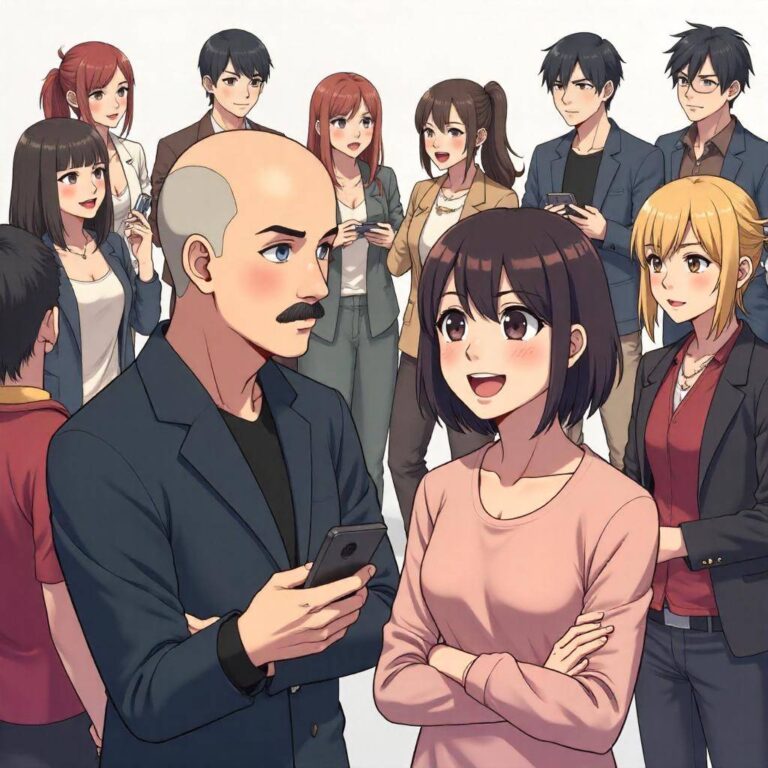Reader’s Question:
I’ve been hearing a lot about 1D, 2D, 2.5D, and 3D, especially in relation to TV and anime. Can someone explain the differences between these terms? I used to think of 1D as us, 2D as celebrities (the people on TV), and 3D as anime characters, but I’m confused
about 2.5D. Can anyone clarify this for me?
Understanding 1D, 2D, 2.5D, and 3D: A Personal Exploration
Hey there, fellow anime and pop culture enthusiasts! So, I recently found myself in a bit of a pickle trying to understand the terms 1D, 2D, 2.5D, and 3D, especially with all the chatter about them in the world of TV and anime. And trust me, I’m not a stranger to these discussions, but sometimes, it just gets a bit confusing. Imagine trying to explain these concepts to someone who casually asks about them—yikes! But hey, I’ve been there and I’m here to share what I’ve pieced together from my own experiences and a few deep dives into this fascinating world.
1D: The Line Between Reality and Imagination
Let’s kick things off with 1D. Now, when I think of 1D, I imagine those classic graph lines from math class—just a straight line. It really is just one dimension! Picture this: you’re staring at a drawing of a line on paper. There’s no depth, no width; it’s just… a line. So, I guess in a way, when we think about 1D in a more abstract sense, we could say that it represents a concept or idea that’s very flat—lacking any real substance. It’s almost like trying to define a thought that’s yet to blossom into something more substantial. But I remember thinking, “Wait, does that mean anything in our real lives?” Not really, but it makes for a great launching point into the world of dimensions!
2D: The Artistic Realm
Now, let’s talk about 2D. Ah, my beloved 2D! This is where things get fun. 2D represents everything that’s flat and artistic—think anime, manga, and video games. I fell head over heels for 2D when I first watched “Sailor Moon” as a kid. Those characters, with their vibrant colors and exaggerated expressions, just popped off the screen—even if they were, you know, literally flat. In Japan, we have manzai comedians who use these 2D tropes to deliver their punchlines, and it’s a beautiful marriage of humor and art. The flatness of 2D makes it all the more special; it allows for creativity without the confines of physical reality. There’s something freeing about drawing a character with huge eyes or wild hair. However, it’s also amusing to think about how my earlier ideas about 1D, 2D, and 3D were quite mixed up! I once joked with friends that we humans are 1D because we’re pretty straightforward, while celebrities are 2D since they seem larger than life on TV. But the reality is, we’re all relatable—even if the characters we love are in their own flat world.
2.5D: The Blurred Lines
Now, here’s where things get tricky—2.5D. What even is that? This is a term that’s gained traction recently, and honestly, it threw me for a loop. So, 2.5D refers to works that take 2D characters and bring them into the real world through live-action adaptations, stage plays, or musicals. I had the chance to catch a 2.5D musical based on a popular anime, and let me tell you, it was a wild ride! The actors embodied the characters so well that it felt like I was watching the anime come to life right before my eyes. But here’s the kicker—it’s not quite 3D because the essence of those characters remains rooted in the animated world. They’re still “flat” in terms of their original design but presented in a three-dimensional medium. The actors’ performances were spot-on, and while they were real people, invoking the essence of 2D characters, it was a fascinating blend of dimensions. I remember discussing it with my friends afterward and feeling like we were all trying to wrap our heads around the idea. It’s like watching your favorite characters step out of their sketchbooks, but they still carry that unique 2D charm.
3D: The Real World
Finally, let’s dive into 3D. This is the realm of reality—our world, where everything has depth and dimension. When I think of 3D, I think of real-life experiences. I mean, we live in a 3D universe, right? Everything around us has volume, weight, and presence. But in the context of media, 3D also refers to live-action films and series that feature real people and tangible settings. I remember watching a 3D animated movie that was so realistic, it blew my mind. The characters felt alive, and yet, they were meticulously crafted by artists. It’s like the opposite of 2D where every detail is honed into perfection. Watching a 3D film is almost like being transported into another world—one that feels so much more immediate than the flat planes of 2D.
The Blurry Boundaries
So, here’s my takeaway: these dimensions are not just about visuals; they represent different ways of storytelling and creativity. Whether it’s the simplicity of 1D, the charm of 2D, the remarkable blend of 2.5D, or the immersive experience of 3D, each has its unique space in our lives and culture. As a parent, I find joy in sharing these dimensions with my child. We might start with a flat children’s book, then transition to animated shows, and even check out a live-action adaptation. Each step is a chance to explore, laugh, and learn together. And who knows? Maybe one day, they’ll dive into creating their own 2D characters or even a 2.5D play! In conclusion, don’t let the terms throw you off. They’re just tools to help us navigate the art world—and there’s no right or wrong way to experience them. Just embrace the journey, and maybe even make a few laugh-out-loud memories along the way.



